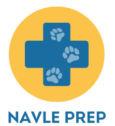The North American Veterinary Licensing Examination (NAVLE) comprises 360 multiple-choice questions. These questions are designed to assess the knowledge and skills essential for entry-level veterinary practice.
In facing the NAVLE, candidates should be prepared for a rigorous 7.5-hour exam session. Optimally balancing time across this extensive array of questions will be crucial.
Key insights into effective preparation strategies and a deeper understanding of the exam’s structure await within this article, guiding aspiring veterinarians towards NAVLE success.
Introduction
Embarking on a career in veterinary medicine culminates in a critical milestone: the North American Veterinary Licensing Examination (NAVLE). This rigorous test is not just a measure of your knowledge; it’s a gateway to your dreams of becoming a practicing veterinarian. Understanding the exam’s structure, particularly the number of questions it includes, is pivotal for a strategic and confident approach on test day. So, let’s dive into the intricacies of the NAVLE, elucidate on how you can manage the exam’s voluminous questions, and ensure you’re primed to excel.
Understanding the NAVLE
Recognized as the benchmark for vet licensure in the United States and Canada, the NAVLE scrutinizes your readiness to enter the professional world of animal healthcare. Its purpose transcends beyond mere academic assessment; it’s an assurance that you, as a future veterinarian, possess the competence to make critical decisions in varied clinical scenarios.
Constructed by the International Council for Veterinary Assessment (ICVA), the NAVLE assesses your knowledge across a broad spectrum of animal species and medical conditions. The gravity of this exam is undeniable. Not only does it signify the culmination of countless hours of study, but it also represents the final hurdle before you can wear the veterinarian’s coat with pride.
Exam Structure and Format
To prepare adequately, familiarize yourself with the layout of the NAVLE. It employs a computer-based format, with questions thoughtfully designed to challenge your diagnostic and therapeutic judgment. Stretching over a span of 7.5 hours, the exam is an enduring test of your stamina and mental agility. Administered biannually, the NAVLE is your moment to shine.
Here’s a closer look at what to expect:
- Time Allotment: You’ll have 7.5 hours to navigate through the questions, including breaks.
- Question Style: The vast majority of the test consists of multiple-choice questions.
- Sections and Blocks: Your exam is divided into sections or ‘blocks,’ with a finite number of questions in each.
- Delivery Mode: Distributed via computer at designated testing centers, the NAVLE calls for both academic preparation and test-taking familiarity with digital formats.
For an in-depth understanding of the NAVLE format, visit the Frequently Asked Questions page of the ICVA.
The Number of Questions in the NAVLE
So, you might wonder about the specific navle how many questions dilemma. The NAVLE confronts you with a whopping 360 multiple-choice questions. While this figure may seem daunting, the test’s structure is founded on statistical methodologies designed to accurately reflect your proficiency. Each question is a stepping stone, and every correct response moves you closer to licensure.
Decomposing the figure further reveals how these questions are not randomly clustered. They are systematically divided to encapsulate a wide array of topics and species, ensuring a comprehensive evaluation of your veterinary education.
Types of Questions on the NAVLE
Delving deeper into the NAVLE’s anatomy, you’ll find that its core is built on multiple-choice questions (MCQs). These are crafted to simulate real-world scenarios that a veterinarian might encounter. The format is straightforward:
- Stem: This is the scenario or problem statement.
- Lead-in: The specific question following the stem.
- Options: Typically four, where one is the correct answer, and the others are plausible but incorrect choices.
The beauty of these MCQs lies in their diversity; you’ll encounter questions ranging from diagnosing symptoms to identifying the best course of treatment. But that’s not all. The NAVLE goes beyond surface-level queries:
- Visual Stimuli: Some questions come with images or diagrams, enhancing the need for accurate interpretation skills.
- Case-based: Examinee’s diagnostic prowess is tested through questions built around case descriptions, asking you to step into the shoes of a working vet.
- Drag-and-Drop: Although rarer, these interactive questions add another layer of complexity to the test.
Mastering this gamut of question types is a marathon, not a sprint. As you prepare, remember that each question is an opportunity, not a hurdle. Crafting your test-taking strategies to address the diversity of the NAVLE question types will no doubt set you on a course for success. Becoming familiar with the test format can alleviate some of the anxiety associated with the unknown and allow you to focus your energy on the questions at hand.
Time Management Strategies for the NAVLE
With 360 multiple-choice questions standing between you and your goal, time management emerges as a skill as crucial as your veterinary knowledge. You need to approach the NAVLE with a clear plan for how you’ll allocate time to each question. Here’s how:
- Pacing: Allow yourself about one minute per question, keeping a steady pace to avoid a last-minute rush.
- Scheduled Breaks: Use the structure of the exam to take breaks at intervals to maintain mental acuity. You have a 45-minute break allotted, which you can split as needed.
- Priority Answers: Answer questions you find easy first, flagging trickier ones to revisit if time permits. This ensures that you secure all the ‘sure points’ early on.
- Mocks & Timers: Practice with timed mock exams to build your time management muscles. These can be found on various preparation sites or through resources recommended by the Royal Veterinary College’s study support.
By integrating these strategies into your preparation, you’re not just preparing to pass; you’re equipping yourself to excel.
Preparing for the NAVLE
Preparing for the NAVLE is a marathon, not a sprint. You need a strategy to cover the breadth of topics confidently while also becoming adept at handling the examination’s format. Here’s a structured way forward:
- Diagnostic Assessments: Begin with self-assessment exams to identify gaps in your knowledge.
- Study Plan: Create a study plan tailored to address your weak areas and reinforce your strengths.
- Review Sessions: Utilize peer study groups and review sessions for collaborative learning.
- Resource Use: Dive into recommended resources, such as the NAVLE self-assessments, VetPrep, Zuku Review, and official study guides to solidify your understanding.
Remember, navle how many questions isn’t just a query about the exam’s length—it hints at the kind of endurance and consistent focus your preparation must entail.
NAVLE Passing Criteria and Scoring
The NAVLE isn’t scored in black and white terms of right or wrong answers. It uses a scaled score system, ranging from 200-800, with a passing score usually set at 425. This means your performance is contextualized within the broader candidate pool, and your score reflects not just your knowledge, but also your ability to perform under the pressures of a formal exam setting.
Understanding the scoring system is key to calibrating your exam strategy. More information on scoring can be found through the ICVA’s FAQs.
FAQ Section
Within the journey to NAVLE success, your path is fraught with questions, some of which we’ll tackle here:
- How many attempts can I take at the NAVLE? You are allowed up to five attempts to pass the NAVLE.
- Who is eligible for the NAVLE? Eligibility generally depends on your level of education and whether you meet the requirements set by the ECFVG or PAVE programs.
- How should I interpret my NAVLE score? Instead of focusing solely on the raw score, consider the scaled score relative to the passing threshold.
Diving deeper into eligibility criteria, attempts, and score interpretation will ensure that you’re as prepared logistically for the NAVLE as you are academically. For more detailed answers, visit ICVA’s FAQ for authoritative insights.
Conclusion
As you stand on the precipice of a career in veterinary medicine, navle how many questions isn’t merely a figure—it symbolizes the extensive journey you’ve embarked on and the hard work you’ve put into reaching this point. The NAVLE, with its vast array of questions, is your final challenge before entering the professional world.
Let the knowledge that every question you face is a chance to demonstrate your capability fuel your preparation. With the strategies and resources we’ve discussed, you’re not simply preparing for an exam—you’re shaping the future of your veterinary career. So approach the NAVLE with confidence, navigate its challenges with poise, and step into your role as a guardian of animal health with the assurance that comes from rigorous preparation and a deep understanding of your craft.
NAVLE how many questions? Discover the exam’s structure, question count, and tips for veterinary licensure success in our guide.

